Eggplant Shoot and Fruit Borer Management is a critical aspect of maximizing profits in eggplant cultivation. If uncontrolled, these tiny yet destructive pests can wreak havoc on your crop, leading to significant financial losses. This blog will delve into effective strategies for managing and preventing eggplant shoot and fruit borer infestations.
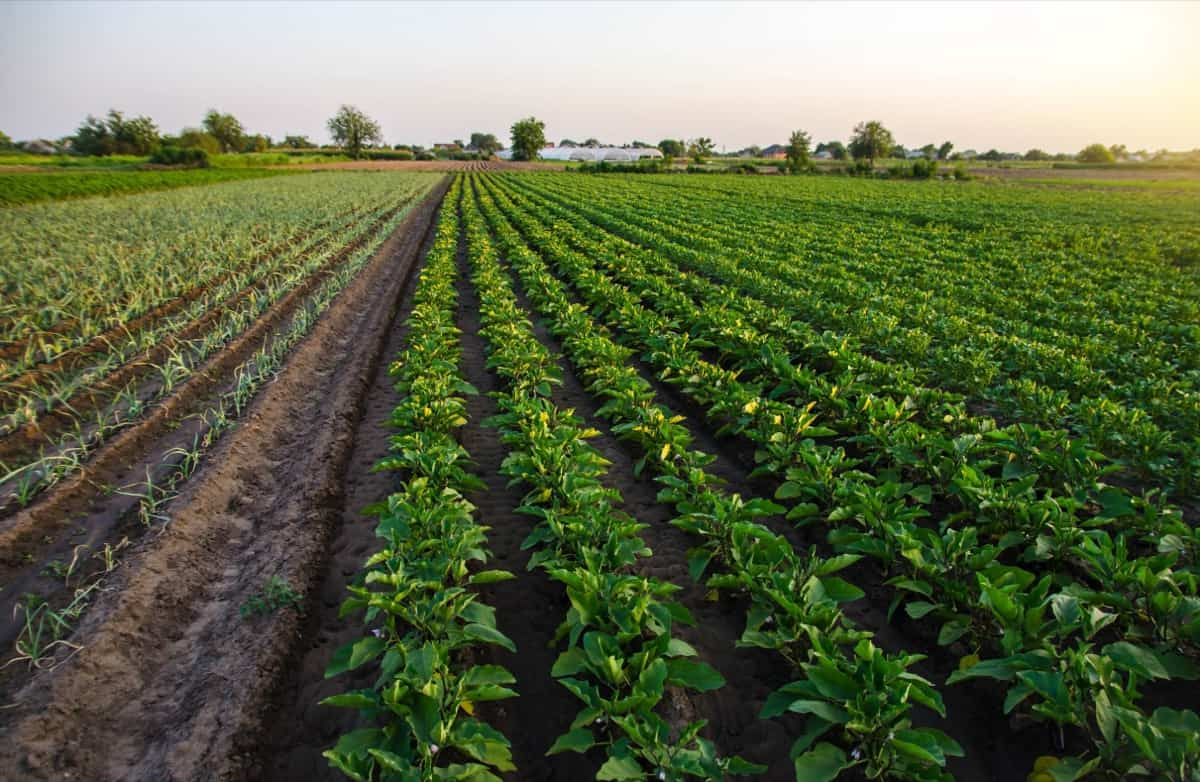
What is Eggplant Shoot and Fruit Borer Management?
Eggplant Shoot and Fruit Borer Management is a crucial agricultural practice to mitigate the damage caused by the eggplant shoot and fruit borer (Leucinodes orbonalis) in eggplant cultivation. This pest is notorious for boring into eggplant shoots and fruits, resulting in yield loss and economic damage.
Scientifically, integrated pest management (IPM) approaches are employed, combining cultural practices, biological controls, and judicious use of pesticides. For instance, releasing Trichogramma wasps, natural predators of the borer, can help control infestations.
Eggplant Shoot and Fruit Borer (ESFB)
Eggplant Shoot and Fruit Borer (ESFB) is a major threat to global eggplant production, affecting yield and fruit quality. Current management practices rely on insecticides, which pose risks to human health, livestock, and the environment. Non-chemical approaches have gained importance, such as hoeing, clipping damaged fruits and shoots, and weeding at weekly intervals.
In case you missed it: How to Grow Eggplant in USA: Soil, Propagation, Planting, Care, and Farming Tips
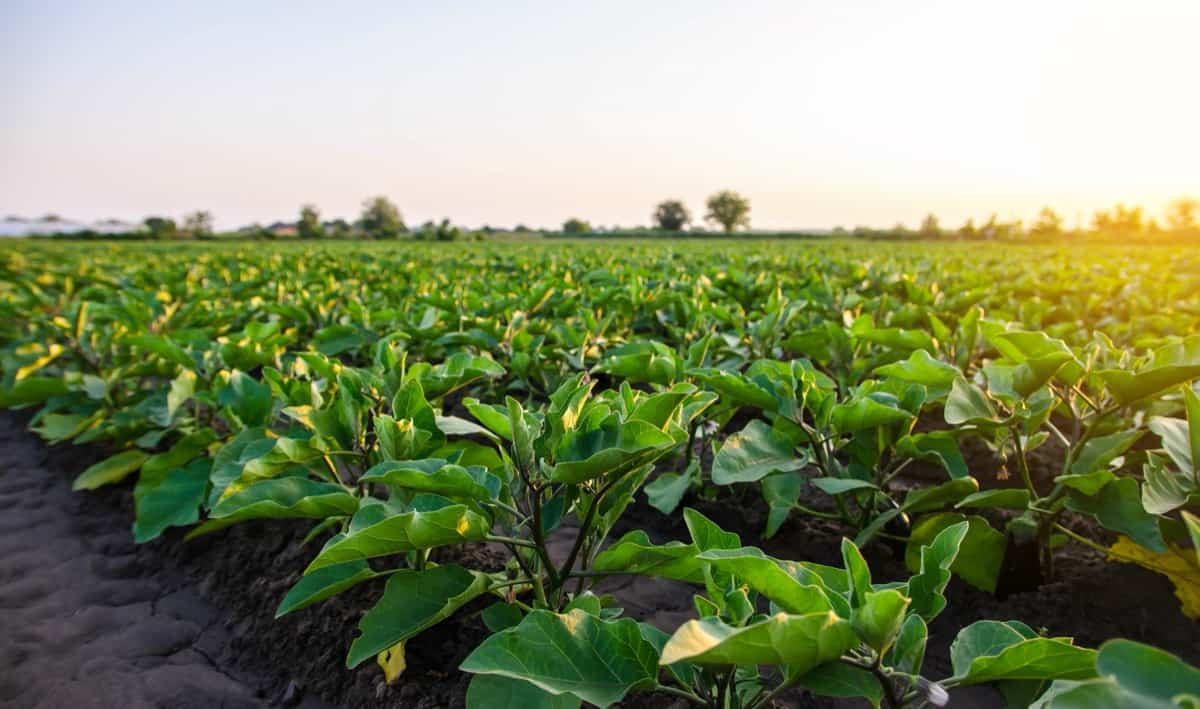
This study assessed the effectiveness of non-chemical approaches, including the biocontrol agent Trichogramma chilonis, individually and in combination with these practices. Results showed significant reductions in ESFB infestations and increased eggplant yields compared to control groups. The combined treatment of T. chilonis, hoeing, and clipping was the most effective, followed by a combination of hoeing, clipping, and weeding. Integrating hoeing with weekly clipping also reduced pest infestation and improved yields.
Life Cycle of the Eggplant Shoot and Fruit Borer (ESFB)
Egg Stage: The ESFB’s life cycle begins with moths laying tiny white eggs, primarily on the leaves of eggplant plants. These eggs hatch in 4 to 5 days, transforming into tiny, translucent larvae.
Larval Stage: The newly hatched larvae, measuring just a few millimeters in size, then tunnel inside the tender shoots or fruits of the eggplant. During this larval stage, the most significant damage occurs as they feed on the inner flesh of the eggplant fruit.
Growth and Pupal Stage: After around 15 to 20 days of feeding and growing, the larva reaches full size, typically measuring 10 to 15 millimeters. At this point, it makes a small hole in the fruit or shoots and escapes into the soil, usually at night. It forms a robust cocoon near the soil surface, appearing much like dried plant debris. This stage is known as the pupal stage, where the insect rests and undergoes transformation.
Adult Stage: Approximately a week later, the pupa undergoes a remarkable transformation, emerging as an adult moth. These moths are small and typically white, with a pink and bluish tinge, and may have a few brown spots on their wings. Importantly, adult moths do not feed on eggplant; they exist on plant exudate or dewdrops. During the day, moths hide under the leaves of eggplant plants, while at night, they come out into the open and mate within the eggplant field. Following mating, female moths lay eggs, thus completing the life cycle of the ESFB.
Sources of Eggplant Shoot and Fruit Borer Infestation
Migration from Neighboring Fields: EFSB moths can commonly infest newly planted eggplant crops by flying in from neighboring fields where damage has already occurred. Since these moths can travel between fields, all farmers within a community must collaborate in managing EFSB infestations.
Transplanting of Infested Seedlings: Eggplant seedlings used for transplanting can sometimes carry EFSB eggs or tiny larvae, particularly if they originate from slightly egg-infested transplants or areas with prior infestations. This highlights the importance of inspecting and ensuring the cleanliness of seedlings.
In case you missed it: Top 15 Steps/Ways to Boost Eggplant/Brinjal Yield: How to Increase Production, Size, and Quality

Pupae from Previous Crops: If the previous crop in the same field was also eggplant, EFSB pupae from that crop resting in the soil can emerge as adults and infest the new eggplant crop.
Debris and Uprooted Plants: The presence of old, uprooted eggplant plants or debris near the field can serve as a breeding ground for EFSB. Pupae hidden beneath such debris can develop into adults and infest the nearby eggplant crop.
Damage by Eggplant Shoot and Fruit Borer
EFSB infestations typically begin when eggplant plants start flowering. Control measures should be initiated at this stage. Early symptoms include wilted shoot tips, but it’s important to avoid using insecticides before these symptoms appear, as this can be wasteful and harm natural predators of EFSB. As the plants start bearing fruit, most larvae shift their focus to the tender shoots and feed inside these plant parts.
Current Methods of Eggplant Shoot and Fruit Borer Control
Prevention through Crop Debris Management
- Before planting a new eggplant crop, ensure thorough destruction of crop debris from the previous season. EFSB pupae can survive in this debris, and destroying it prevents infestations.
- Old, uprooted eggplant plants should be promptly destroyed after the final harvest to eliminate potential EFSB larvae reservoirs.
Use Healthy Seedlings
- Avoid using eggplant seedlings exposed to potential EFSB infestation sources, such as abandoned crops or debris heaps.
- Raise eggplant seedlings away from these sources or protect them with nylon netting to prevent EFSB moths from laying eggs on them.
Timely Shoot Removal
- Regularly inspect eggplant plants for freshly wilted shoot tips signs of EFSB larval feeding.
- Cut and destroy these infested shoots immediately to prevent larval development and reproduction. Proper disposal is crucial, as pupating larvae in discarded shoots can infest new plants.
Pheromone Lures for Trapping
- Utilize sex pheromone lures, commercially available in some regions, to trap male EFSB moths. These lures attract and trap male moths, disrupting their mating.
- Employ traps like delta, winged, or plastic funnel traps, ensuring proper placement and maintenance to maximize effectiveness.
Reduced Insecticide Use
- Avoid indiscriminate use of broad-spectrum insecticides, as they are ineffective once EFSB larvae enter eggplant shoots or fruits.
- Selective and biological insecticides like Neem can be considered if insecticide application is necessary. This preserves natural predators of EFSB and minimizes harm to beneficial insects.
Protection of Natural Predators
- Recognize the importance of natural predators such as spiders, mantids, earwigs, ladybird beetles, wasps, and ants in controlling EFSB and other pests.
- Reduce or eliminate broad-spectrum chemical pesticides to preserve these natural enemies, contributing to a healthier balance in the ecosystem.
In case you missed it: Fertilizer Management in Brinjal/Eggplant: Organic, Compost, How and When to Apply
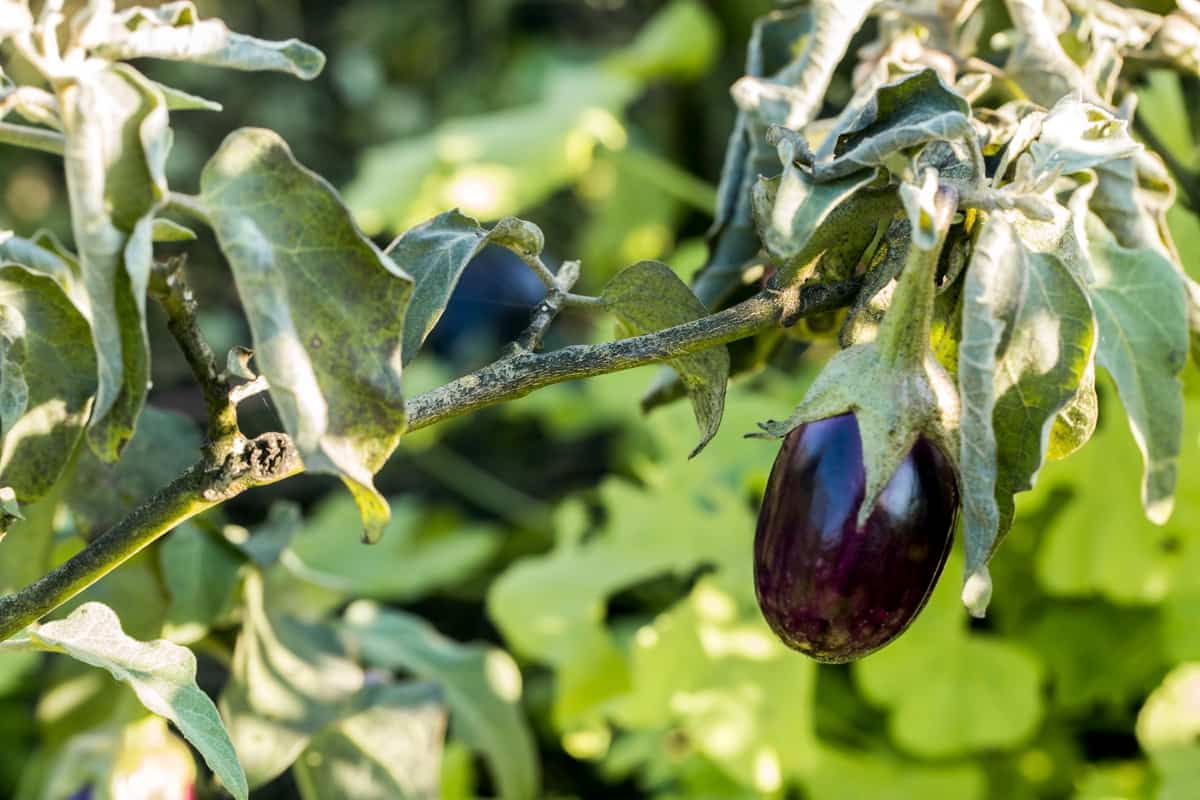
Consistent Monitoring and Adherence
- Implement these strategies consistently throughout the growing season to maintain effective EFSB control.
- Adherence to all the steps mentioned above ensures sustainable EFSB management, reducing pest populations and limiting damage to eggplant fruit.
Challenges with Chemical Pesticides for Eggplant Shoot and Fruit Borer
Indiscriminate Use: Farmers often apply chemical insecticides indiscriminately without proper knowledge of their target pests. This can lead to inappropriate chemicals and incorrect dosages, rendering the treatment ineffective.
Frequent Spraying: To combat EFSB and other pests, some farmers resort to excessive pesticide application, sometimes spraying their crops twice weekly. This excessive spraying incurs substantial costs and raises concerns about the environmental impact.
Environmental and Health Risks: The widespread use of chemical pesticides is associated with adverse environmental and human health effects. Pesticides can contaminate soil and water sources, affecting ecosystems and potentially posing health risks to farmworkers and nearby communities.
Development of Pesticide Resistance: Repeated and indiscriminate use of pesticides can lead to developing pesticide resistance in EFSB and other pests. Over time, these insects may become tolerant to the chemicals, rendering them less effective for pest control.
Economic Impact: Overreliance on chemical pesticides can result in substantial economic costs for farmers. The high cost of purchasing pesticides and the expenses associated with frequent application can significantly reduce a farmer’s profit margins. Integrated Pest Management (IPM) strategies, combining biological control, cultural practices, and targeted pesticide use, offer a more balanced and environmentally friendly approach.
By reducing pesticide dependency and promoting natural predator populations, IPM can help control EFSB while mitigating the adverse impacts of chemical pesticides on human health and the environment. This shift towards sustainable pest management practices is essential for the long-term health of eggplant crops and the well-being of farming communities.
Managing Eggplant Shoot and Fruit Borer (ESFB): Non-Chemical Approaches
Eggplant, also known as brinjal and aubergine, holds great importance in South Asia, particularly in Bangladesh, India, and Pakistan, where it covers approximately 50% of the global eggplant cultivation area. Eggplant is a year-round staple with high nutritional value, rich in minerals, vitamins, and amino acids. Despite its significance, eggplant cultivation in Pakistan faces productivity challenges, with several factors contributing to this issue.
Among these factors, the Eggplant Shoot and Fruit Borer (ESFB), scientifically known as Leucinodes orbonalis Guenee, emerges as a major pest. ESFB is highly damaging to eggplant crops, with its presence throughout the year in moderate climates. The females lay around 250 eggs on developing eggplant fruits and young shoots. Larvae, covered in sparse hairs, can grow up to 20 mm long and complete their life cycle in 3-6 weeks, with up to five generations annually.
The larvae of ESFB inflict severe damage by boring into petioles, midribs, and young shoots. This feeding disrupts the translocation of nutrients, causing wilting and decreased fruit growth and yield. Furthermore, larvae enter young fruits, creating tunnels that render the fruits unmarketable. Secondary bacterial infections can exacerbate fruit quality deterioration.
ESFB poses a significant threat due to its rapid reproduction and extensive damage potential. A single larva can damage 4-6 healthy fruits, varying infestation rates depending on location, season, and eggplant variety. To manage ESFB, various strategies have been explored. Conventional methods often rely on chemical insecticides, but these can harm the environment and beneficial organisms. Moreover, the pest’s high reproduction rate can lead to pesticide resistance and resurgence.
In case you missed it: Mulching Brinjal Plants (Eggplants) Organically/Inorganically
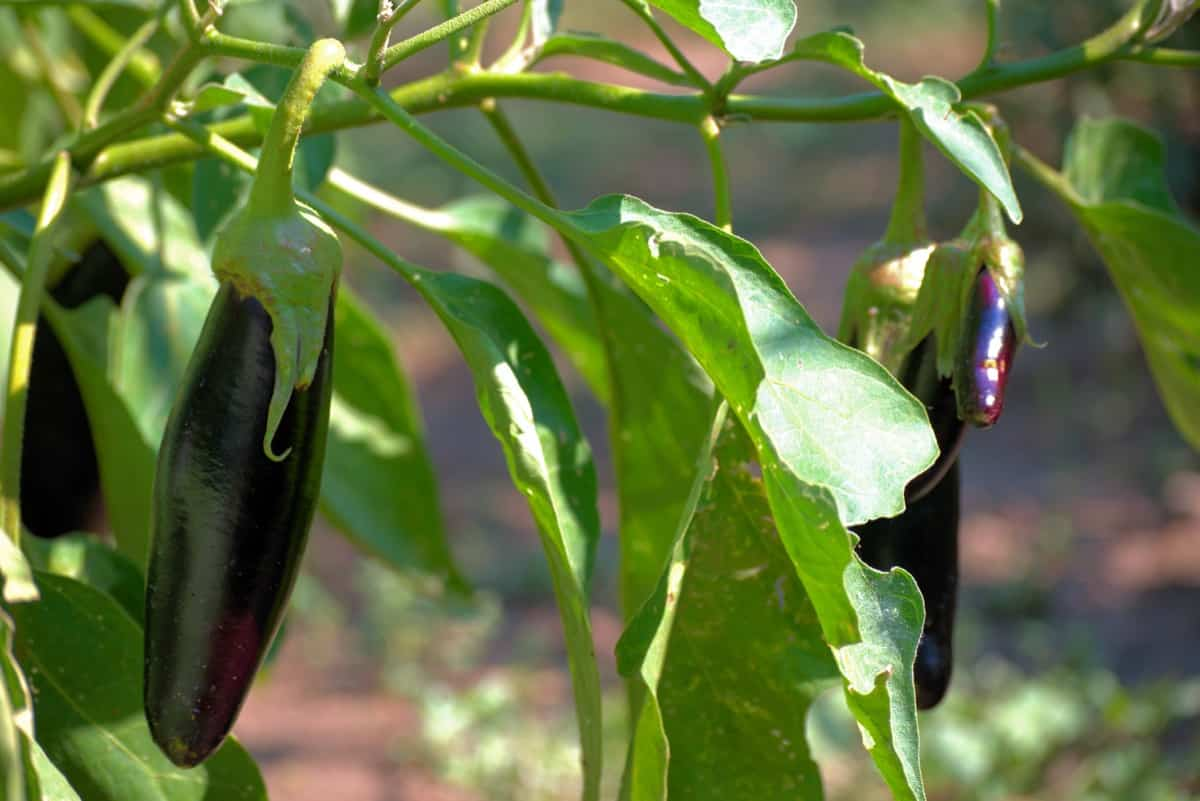
In response, non-chemical approaches have gained attention. These include cultural practices such as regular pruning, removal of infested plant parts, and weeding. Additionally, natural predators like Trichogramma chilonis, a parasitoid wasp, have been considered. Combining these approaches has proven effective in reducing ESFB infestations and increasing eggplant yield.
Among these strategies, a combination of cultural methods, including weeding, hoeing, and removing infested plant parts, has shown promise. When integrated into pest management programs, these practices can significantly reduce ESFB infestations, contributing to more sustainable eggplant cultivation while mitigating the impacts of climate change.
Prevention Strategies for Managing Eggplant Fruit and Shoot Borer
- Understanding the Pest: The shoot and fruit borer is a small moth whose caterpillar burrows into and feeds on various parts of eggplants. Knowing your enemy is the first step in effective management.
- Residue Removal: After the previous season’s crop, collecting and disposing of all crop residues is essential. Burning or burying these residues can help eliminate potential breeding grounds for the borer.
- Maize Trap Barriers: Create maize trap barriers around your eggplant plots about 15 days before transplanting eggplants. These barriers can deter the moths responsible for laying eggs on the eggplants.
- Tolerant Varieties: Opt for eggplant varieties known for tolerating borer pests. Round-shaped fruit-bearing varieties like Pusa purple round have demonstrated higher resistance.
- Healthy Seedlings: Begin with healthy, pest-free seedlings. Ensure that these seedlings are grown far away from potential sources of infestation, such as old eggplant fields or eggplant stubble.
- Nylon Netting: Protect your seedlings by growing them under nylon netting. This barrier prevents moths from laying eggs on your plants.
- Intercropping: Consider intercropping your eggplants with coriander or fennel. This can help reduce pest infestations, as these companion plants can deter borers.
- Natural Enemies: Conserve natural enemies of the borer by avoiding the use of broad-spectrum insecticides. Providing suitable habitats for these beneficial insects can help maintain a balanced ecosystem.
- Harrowing: Periodically harrow the field to expose borer larvae to sunlight. This exposure can be lethal to the larvae and help reduce their populations.
- Early Vigilance: Begin monitoring for borers at the vegetative stage of your eggplants. Look for signs such as drooping tender shoots and wilting.
- Inspect for Damage: Check your crops for small exit holes below the fruits’ calyx and larvae inside damaged fruit and shoots.
- Fruiting Stage Monitoring: As your eggplants reach the fruiting stage, be vigilant for holes in the fruit filled with insect excretions.
- Identification: Familiarize yourself with the appearance of the adult moth, which has a wingspan of 18-24 mm, white wings, and characteristic brown ‘heart’ patterns. Additionally, borer larvae are reddish-translucent in color and can grow up to 15 mm long.
- Thresholds: Take action if you observe that 2% of your plants or at least 1% of your fruit show symptoms of infestation.
Direct Control of Eggplant Fruit and Shoot Borer Management
- Sanitation: Maintain good farm sanitation practices. Dispose of infested plant materials by burning them or burying them at least 3 feet deep in the ground.
- Neem-Based Insecticide: Consider using a neem-based insecticide like Azadirachtin (0.03% EC), such as Azatrol. Mix it with water (1 part Azatrol to 1 part water) and apply it at 7-10 day intervals.
- Remove Damaged Pods: During harvest, separate damaged pods and bury or burn them to eliminate larvae.
- Light Traps: Utilize light traps to capture adult moths at night, reducing their population.
- Infested Shoot Removal: Regularly remove and destroy visibly infested shoots, which appear as dry tips of branches. These can be burned, shredded into tiny pieces, or buried at least 20 cm deep in the soil. This practice should be carried out weekly until harvest and can be a community-level effort.
In case you missed it: Top 15 Best Fungicides in India: Guide to Buy Cheap Weed Killing Fungicides at Best Price
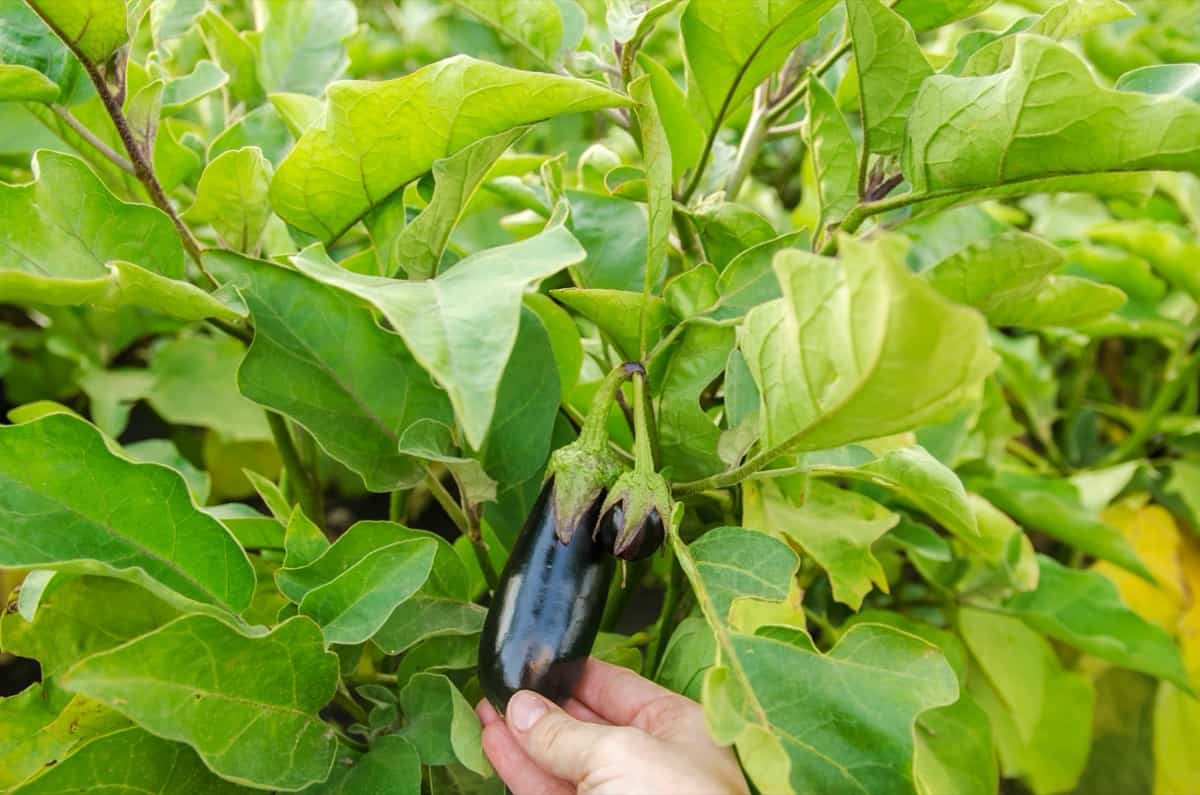
Conclusion
Implementing a comprehensive approach, including monitoring, natural pest deterrence, and targeted control measures, for managing the Eggplant Shoot and Fruit Borer. This strategy ensures healthy crops, minimal losses, and higher profit margins.
- Goat Farming Training Programs in India: A Beginner’s Guide
- Types of Pesticides Used in Agriculture: A Beginner’s Guide
- Economical Aquaculture: A Guide to Low-Budget Fish Farming
- 15 Common Planting Errors That Can Doom Your Fruit Trees
- How to Make Houseplants Bushy: Effective Tips and Ideas
- Innovative Strategies for Boosting Coconut Pollination and Yield
- Pollination Strategies for Maximum Pumpkin Yield
- The Complete Guide to Chicken Fattening: Strategies for Maximum Growth
- Natural Solutions for Tulip Problems: 100% Effective Remedies for Leaf and Bulb-Related Issues
- Revolutionizing Citrus Preservation: Towards a Healthier, Greener Future
- Natural Solutions for Peony Leaf and Flower Problems: 100% Effective Remedies
- Maximizing Profits with Avocado Contract Farming in India: A Comprehensive Guide
- Natural Solutions for Hydrangea Problems: 100% Effective Remedies for Leaf and Flowers
- The Ultimate Guide to Choosing the Perfect Foliage Friend: Bringing Life Indoors
- From Sunlight to Sustainability: 15 Ways to Use Solar Technology in Agriculture
- The Ultimate Guide to Dong Tao Chicken: Exploring from History to Raising
- The Eco-Friendly Makeover: How to Convert Your Unused Swimming Pool into a Fish Pond
- Mastering the Art of Delaware Chicken Farming: Essentials for Healthy Backyard Flocks
- 20 Best Homemade Fertilizers for Money Plant: DIY Recipes and Application Methods
- How to Craft a Comprehensive Free-Range Chicken Farming Business Plan
- Brighten Your Flock: Raising Easter Egger Chickens for Beauty and Bounty
- How to Optimize Your Poultry Egg Farm Business Plan with These Strategies
- Subsidy for Spirulina Cultivation: How Indian Government Schemes Encouraging Spirulina Farmers
- Ultimate Guide to Raising Dominique Chickens: Breeding, Feeding, Egg-Production, and Care
- Mastering the Art of Raising Jersey Giant Chickens: Care, Feeding, and More
- Ultimate Guide to Raising Legbar Chickens: Breeding, Farming Practices, Diet, Egg-Production
- How to Raise Welsummer Chickens: A Comprehensive Guide for Beginners
- How to Protect Indoor Plants in Winter: A Comprehensive Guide
- Ultimate Guide to Grow Bag Gardening: Tips, Tricks, and Planting Ideas for Urban Gardeners
- Guide to Lotus Cultivation: How to Propagate, Plant, Grow, Care, Cost, and Profit
- Agriculture Drone Subsidy Scheme: Government Kisan Subsidy, License, and How to Apply Online
- Ultimate Guide to Raising Araucana Chickens: Breed Profile, Farming Economics, Diet, and Care
- Bringing Hydroponics to Classroom: Importance, Benefits of Learning for School Students
- Ultimate Guide to Raising Polish Chickens: Breed Profile, Farming Economics, Diet, and Care
- Ultimate Guide to Raising Australorp Chickens: Profile, Farming Economics, Egg Production, Diet, and Care
- Silkie Chicken Farming: Raising Practices, Varieties, Egg Production, Diet, and Care